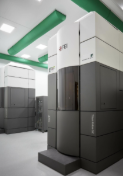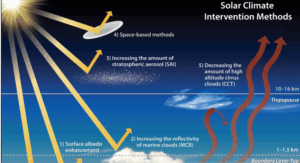
Why in News?
A new technique called Magnetic Isolation and Concentration (MagIC) has enabled cryo-electron microscopy (Cryo-EM) to analyse samples 100 times more dilute than earlier limits. 
About Magnetic Isolation and Concentration (MagIC):
What is MagIC?
MagIC stands for Magnetic Isolation and Concentration – a novel enhancement to cryo-electron microscopy (Cryo-EM).
It enables imaging of ultra-dilute biological samples, 100 times more dilute than previous capabilities.
How It Works:
- Tagging: Molecules are bound to magnetic beads (~50 nm in size).
- Magnetic Clustering: A magnet pulls and clusters bead-bound molecules into dense zones on the cryo-EM grid.
- Image Capture: These clusters allow more usable particles per image, even at <0.0005 mg/ml concentration.
- DuSTER Algorithm: An AI-based tool filters out background by selecting only particles consistently detected across multiple scans.
About Cryo-Electron Microscopy (Cryo-EM):
What is Cryo-EM?
Cryo-EM is an imaging method that captures 3D structures of biomolecules at near-atomic resolution.
It uses rapid freezing (vitrification) and electron beams to image biological samples.
Developed by:
- Initially developed during the 1980s
- Modern breakthroughs led to the 2017 Nobel Prize in Chemistry (awarded to Dubochet, Frank, and Henderson)
Working Principle:
- Sample Preparation: Protein samples are rapidly frozen using cryogenic liquids (e.g. ethane), forming amorphous ice.
- Imaging: Electron beams pass through the frozen sample to produce multiple 2D projections.
- Data Processing: Software reconstructs 3D density maps from 2D images.
- Structure Modelling: Atomic models are fitted into these maps for detailed biological understanding.
Applications of Cryo-EM:
- Structural Biology: Imaging of large proteins, ribosomes, ion channels
- Virology: Visualising virus structures (e.g. SARS-CoV-2 spike protein)
- Cell Biology: Studying organelles, cytoskeleton, mitotic spindle
- Neurobiology: Investigating neuronal signalling and synaptic vesicles
- Drug Discovery: Designing drugs by visualising protein-ligand binding sites
- Molecular Biology: Understanding RNA polymerases, translation complexes, and ribosomes





